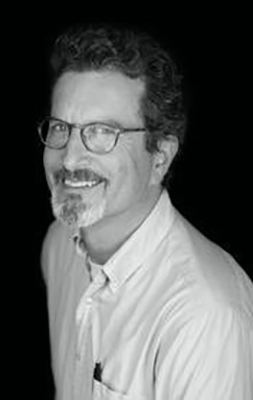
Associate Professor Emeritus at the University of Cincinnati
Frank Russell, AIA, is an Associate Professor Emeritus at the University of Cincinnati where beginning in 1990 he provided instruction in Urban Design and Multi-Disciplinary Innovation. He served in executive roles for multiple research and design units including the DAAP Center for Urban Design, the DAAP Community Design Center, the Provost’s Niehoff Urban Studio, and the University-wide UC Forward program. In this capacity, he has promoted collaborative innovation among the university’s diverse disciplines and external partners through cross-disciplinary experiential learning. Russell is a registered practicing architect and principal of Russell Compton Architects. In private and public practice for more than thirty years, he has carried out numerous architecture projects (50+), urban design plans, and planning studies (20+).
A native of the city, Russell returned after professional work and graduate study to the University of Cincinnati in 1990 to establish the Center for Urban Design where he provided teaching, research, and community engagement. From 1996 he directed the UC Community Design Center, a state sponsored technical service unit. In 2002 Russell initiated the Provost sponsored University-wide Niehoff Urban Studio in partnership with the DAAP School of Architecture and Interior Design and the School of Planning. This studio, located off-campus in Over-the-Rhine and later in Corryville, served as a venue for credit bearing interdisciplinary coursework for students focused on issues relevant to the center city. The studio engaged a broad spectrum of community stakeholders with students and faculty in problem solving public education, research and design activity. The studio has worked in 34+ communities and in partnership with 159+ community based organizations. (see publications below for studio documentation)
Russell’s research has been published in Cities:the International Journal of Policy and Planning, Design Review:The Role of Aesthetic Environmental Quality in Planning, Activist Architecture:Philosophy and Practice of the Community Design Center, and he co-edited New Directions in Urban Public Housing. He has been the recipient of major grants from the Ohio Arts Council and the American Architectural Foundation/National Endowment for the Arts, and has directed the Midwest Regional Mayor’s Institute on City Design sponsored by the US Conference of Mayors. Russell has been recognized with honors from the University of Cincinnati, the AIA Cincinnati Design Awards, the Cincinnati Preservation Association, and the Community Development Corporations Association of Greater Cincinnati. Russell has served as a Commissioner of the Cincinnati Park Board and the Cincinnati Recreation Commission and as past Chair of the Urban Design Committee of AIA Cincinnati. He has been a Trustee of the Cincinnati Zoo, the Mercantile Library, the Mill Creek Restoration Project, Gabriel’s Place, the Center for Closing the Health Gap, and the Over-the-Rhine Foundation. Russell has been a committee member for the Downtown Cincinnati Incorporated, the Uptown Consortium, the Port Authority of Greater Cincinnati, Agenda 360, the Greater Cincinnati Food Policy Council, the City of Cincinnati Food Access Task Force, and the City of Cincinnati Healthy Living Task Force.
With formal study in Art History, Fine Art, Urban Design, and Architecture, Russell holds an A.B. Art from Vassar College (1983), studied drawing at the Art Student’s League and Fortman Fine Art Studios, Florence, Italy (1984) and received an urban design Internship at the Institute for Architecture and Urban Studies, New York City (1985). He graduated with a Master of Architecture degree from Harvard University Graduate School of Design (1989).
Cincinnati’s Over the Rhine neighborhood is a state and national treasure, containing the largest collection of 19th Century Italianate architecture in the country. Once threatened with demolition by neglect, this neighborhood has become a shining example pf preservation, but its not without its challenges. 50% of its historic fabric has been lost since 1930. Despite this, investment and rehabilitation continue to pour into the neighborhood, many times in the form of new, infill construction. While historic conservation guidelines have been in place for decades, guidelines for infill construction had been somewhat loose and vague, given that prior to its recent renaissance, most of the investment was in rehabilitation. As more buildings get rehabilitated, development, in the form of robust infill of existing vacant lots has surged. Neighborhood stakeholders undertook an arduous 8-year process to develop thorough, comprehensive, and VISUAL guidelines to help steer appropriate infill development. This session will explore the good, bad and the ugly of this process, and present often contrasting viewpoints about the effectiveness and appropriateness of specific guidelines that are designed to influence new infill development. Approved for 1.00 AIA HSW credit.